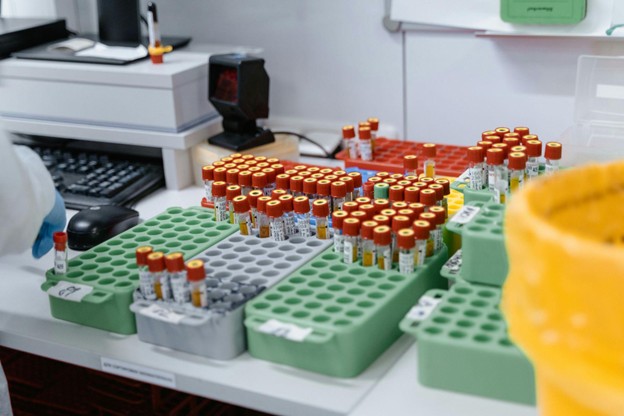Science is moving at warp speed these days, isn’t it? New gadgets and methods are flipping the script on how labs do their thing. Automation’s the star of the show, especially in biology and drug research. As the pressure’s on to crank out results faster, researchers are itching for systems that can keep up. Enter fully autonomous labs—they’re stepping up in a big way.
Lab work’s no walk in the park. It takes forever and needs crazy precision. One tiny slip-up can throw you back days, maybe weeks. Automated systems are like a lifeline here. They bring order, speed things up, and for something like cell line development? They could be a total game-changer.
Table of Contents
Zooming Through the Process
Cell line development isn’t exactly a quick errand. You’re tweaking genes, picking the best cells, screening them, scaling up the winners—it’s a lot. Each step’s gotta be spot-on, or you’re starting over.
That’s why labs are leaning hard into machines. Tons of teams are using stuff like cell line development automation to make things smoother. These systems handle the nitty-gritty—pipetting, plating, picking colonies. They even keep tabs on incubation and snap pictures of what’s going on.
It’s a huge time-saver. Plus, robots don’t mess up because they’re zoning out or had a bad day. You get steadier results, and things just move faster.
Nailing the Data
Data’s everything in research. Scientists live for those measurements—how cells are growing, what proteins they’re pumping out, how stable they are. If those numbers are off, you’re flying blind.
Doing things by hand can make data kinda wobbly. Even little differences add up. Automated labs fix that. Machines do the same thing, the same way, every single time. They track every move and log data as it happens.
That gives you a crystal-clear picture of what’s up with your cells. Spot a dud early? Done. Find a superstar cell line? You know it. Better data means you’re making smarter calls, no guesswork needed.
Juggling More at Once
Biotech’s a busy world. Companies are often tackling a gazillion projects, each needing its own cell lines. Trying to manage that manually is like herding cats—it’s exhausting and eats up resources.
Autonomous labs are a lifesaver here. Machines don’t need coffee breaks or sleep. They can churn through tasks 24/7, letting labs take on way more projects at once. You’re getting more done without hiring a whole new crew.
Scaling like that’s tough any other way. With demand spiking, it’s a big deal—more output, same quality.
Easing the Grind
Lab work’s got some seriously repetitive chores. Stuff that doesn’t need a PhD, just focus—like moving samples around, over and over. Techs can spend hours stuck in that loop.
That’s not how you keep people stoked about their jobs. Automation flips the script. Let machines do the boring bits, and suddenly your team’s free to tackle the big stuff—like digging into results or planning the next move.
It’s a morale boost, for sure. People love solving puzzles, not playing robot themselves. Plus, it leads to sharper ideas and better work.
Running Labs from Anywhere
Tech’s changed how we work, hasn’t it? Remote’s the name of the game in tons of fields, and labs are catching on. With automation, you don’t need to be glued to a bench all day.
Fully autonomous labs let you run things from afar. Start tasks with a click, check data live, collaborate with folks across the planet. Experts can huddle up online, eyeball the same results, and map out what’s next.
It’s opening doors left and right. Less travel, tighter teamwork—global projects just got way easier.
Saving Cash in the Long Run
Okay, yeah, setting up an automated lab isn’t cheap. The gear costs a chunk, and getting it all running takes time. But hear me out—it pays off.
Fewer screw-ups mean less wasted material. Quicker work means you’re hitting milestones faster. And you don’t need as many hands on deck to keep things humming. Over time, that adds up big.
Your budget stretches further. You can chase more ideas without going broke. Maybe even get a new drug out sooner. That’s the kind of math labs love.
Staying on the Right Side of Rules
Biotech’s got rules out the wazoo. Everything’s gotta be tracked, double-checked, squeaky clean. Manual work makes that a headache—people miss stuff, skip a note, whatever.
Automation’s got your back. It logs every step, builds records as it goes, sticks to the plan. That’s gold when regulators come knocking. Data’s ready, no scrambling.
It builds trust and speeds up approvals. For companies racing to launch a new treatment, that’s huge.

Rewriting How Science Happens
Autonomous labs aren’t just fancy toys—they’re part of something bigger. They’re changing how science gets done, making it faster, sharper, leaner.
For cell line development, that’s massive. It’s a long, fiddly process, but automation takes the edge off. It clears hurdles, lets teams focus on the good stuff—like pushing research forward.
Cell line development automation is already killing it. It’s helping labs do more with less, boosting quality along the way. It’s setting a new bar for what’s possible.
As more labs jump on board, it’s only gonna get better. Projects will fly, results will shine, and science will hit new peaks. That’s how you spark a revolution—one lab, one breakthrough at a time.

